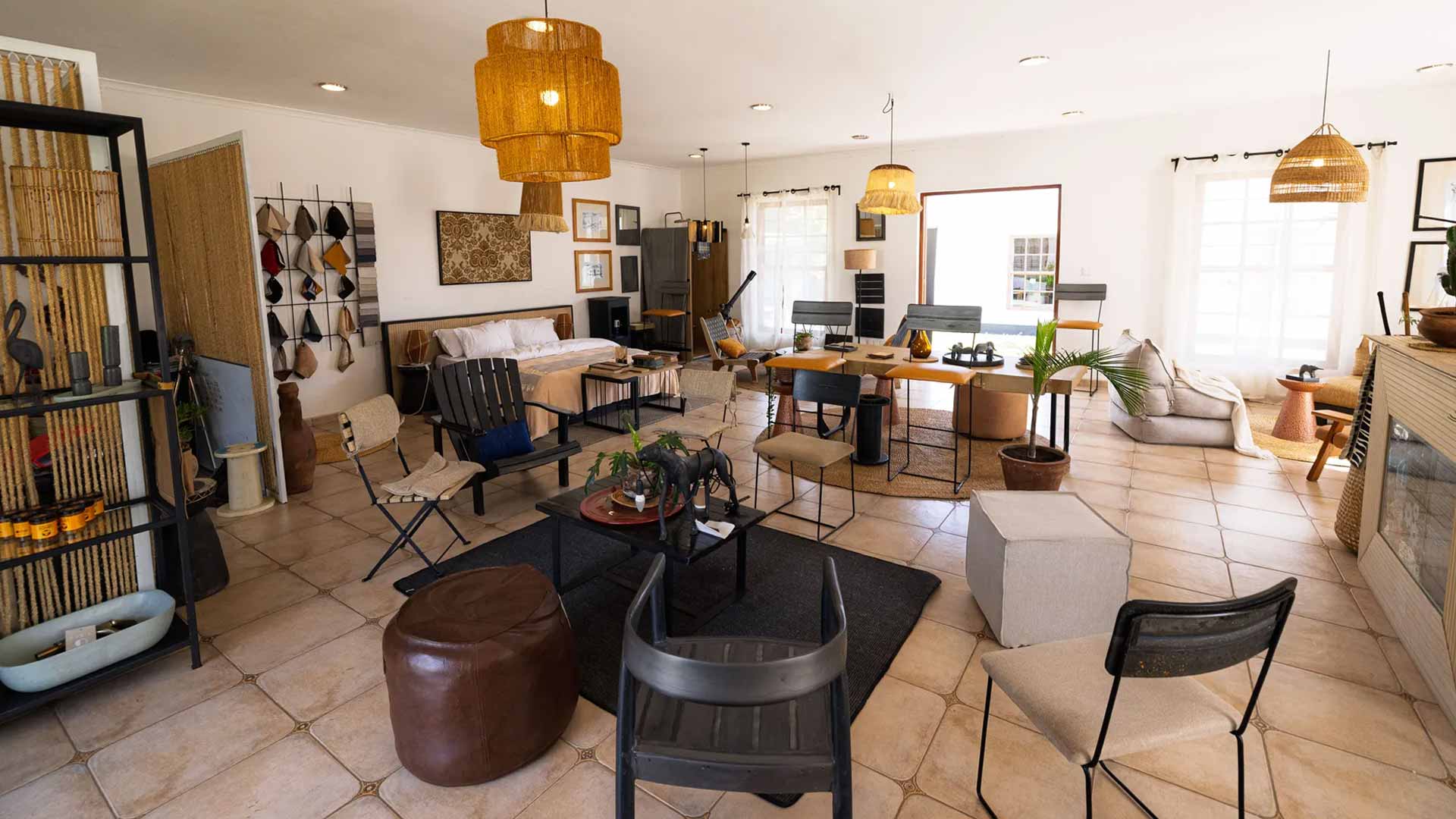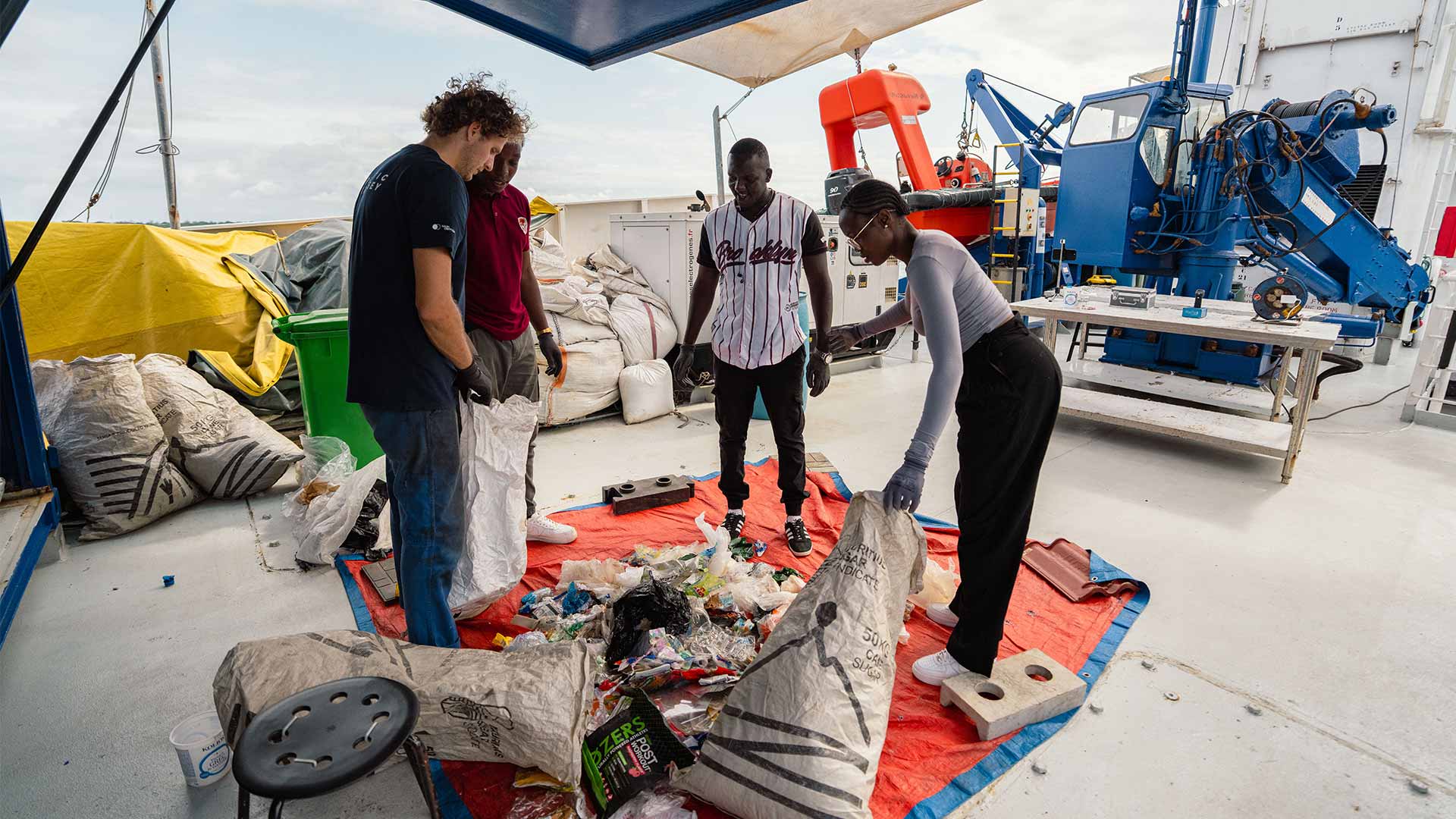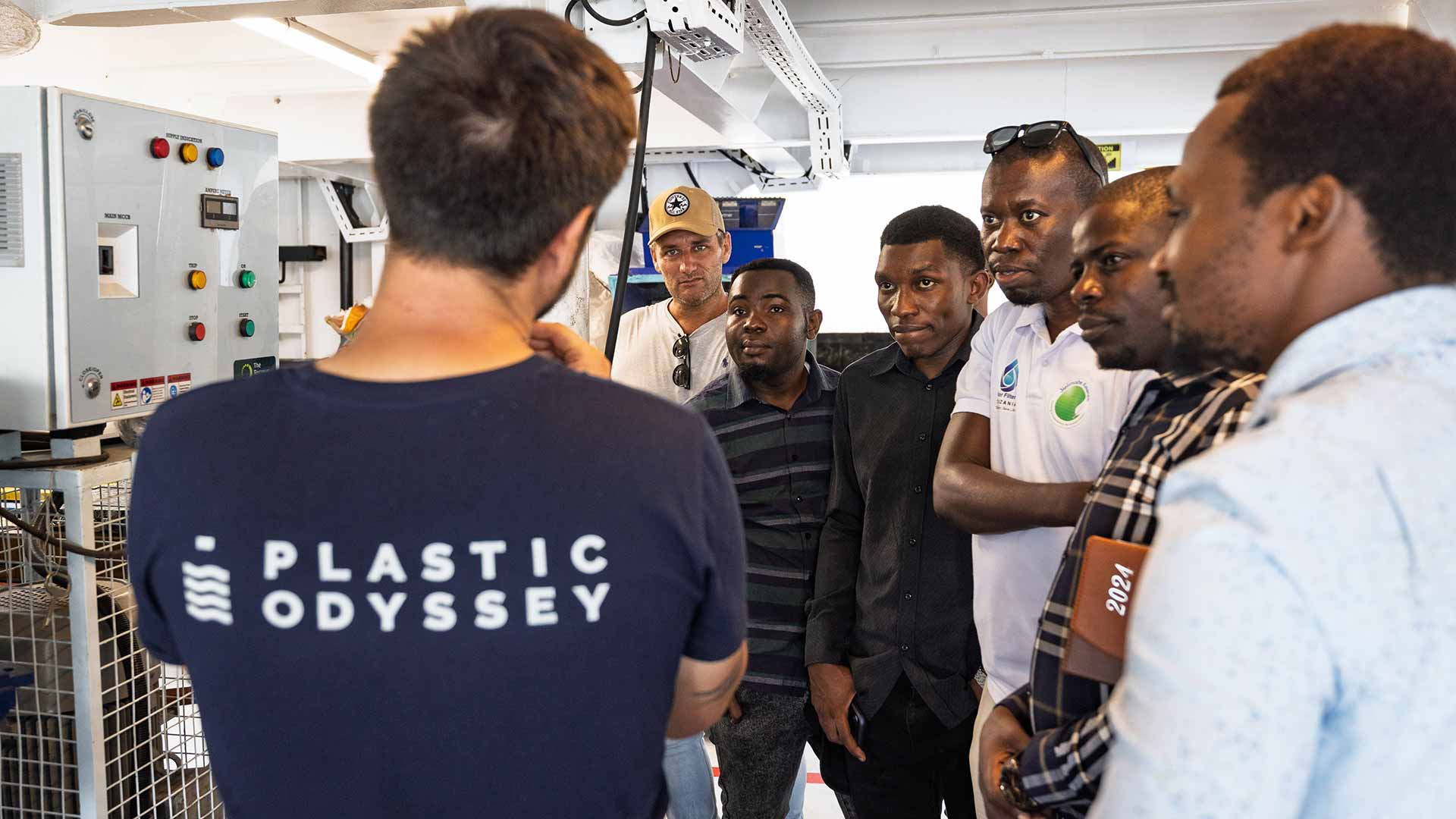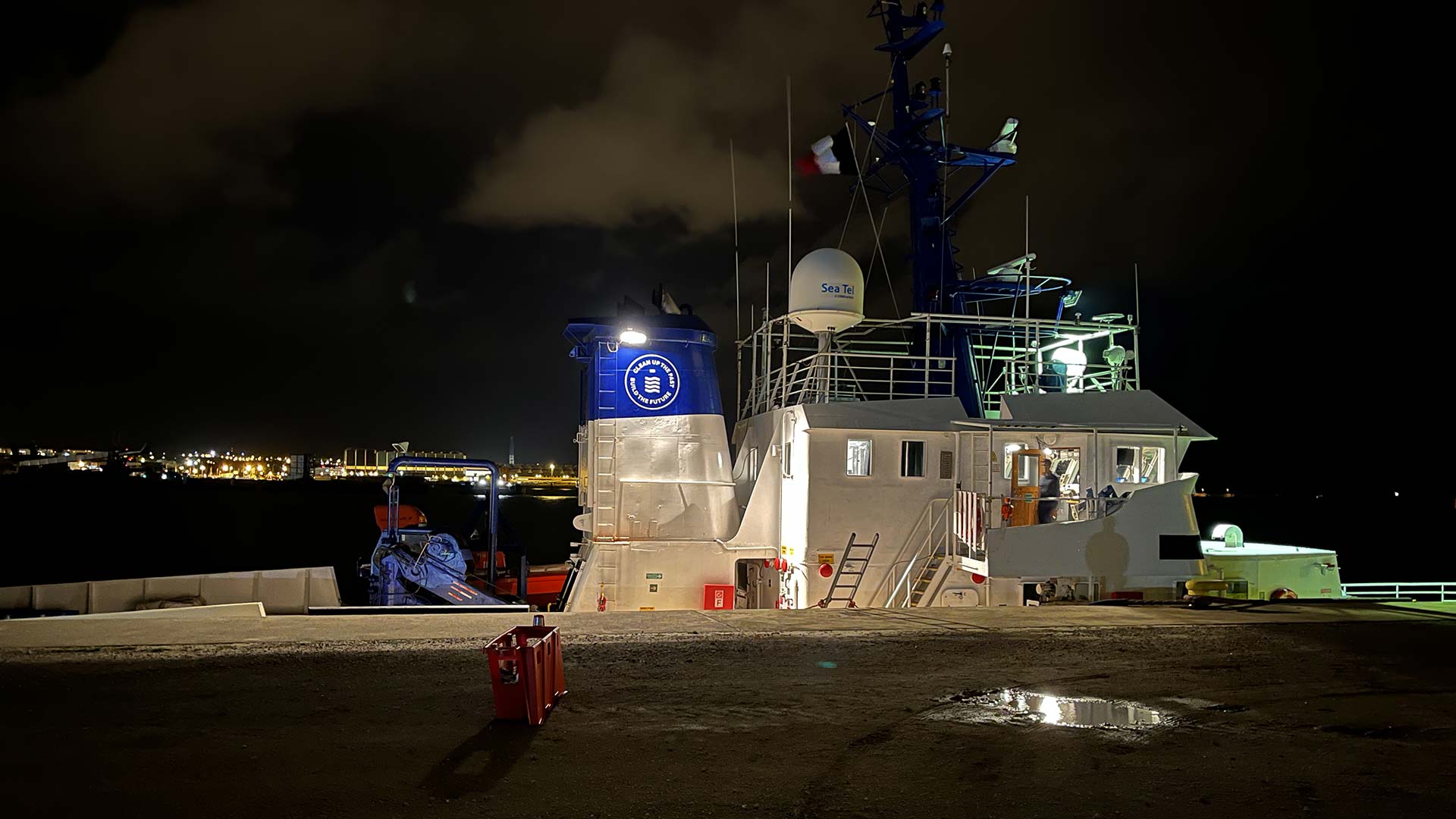
A journey from Dunkirk to Saint-Nazaire
by Alexandre Dechelotte, CCO and co-founder of Plastic Odyssey
First day of 2022, first voyage for the Plastic Odyssey vessel. After many postponements, departure details are finally in place. This is good news for the whole team: seeing the ship at sea – after so many months in the shipyard – reassures our troops and boosts their spirits! This navigation has a very special flavor, because its goal is to reach the port of Saint-Nazaire as soon as possible to start… a new refit! The last one. After more than a year and a half of renovation in the expert hands of the Damen shipyard in Dunkirk, the ship will now undergo its last big repair: replacement of a complete ballast tank whose wear was discovered during an inspection a few months ago. An area that had never been visited during the ship’s 40-plus year life time; it is fortunate that this defect was discovered before the big departure.
Saturday, January 1st, 2022
08:15 am
As this part of the world goes to bed, the crew led by Captain Olivier Charbonnier casts off from the Suez pier in Dunkirk. From Bordeaux, I am on the phone with the second engineer, Ludovic, who brings me live updates of the first minutes of this very first navigation. I will embark in a few days to lend a hand to the crew on one of the voyages, but for the time being, I am happy to experience this little expedition, remotely. At the other end of the line, I hear the captain speaking with the ship’s technical director. He, too, must have spent a special New Year wondering if the wind would be kind enough to finally let the ship sail…
“Everything is going according to plan A for now!” announced the captain. After passing along the pier for a good distance, staying close for a while due to the wind, and well protected by our new fenders (thanks Fendertex!), the ship finally crosses the Freycinet basin to reach the Watier Loc, separating the port from the Channel, protecting it from the tides.
The captain holds the ship’s logbook in which he notes any event that occurred on board: the headings, the positions, the ship speeds, and the weather. This precious report from the sea allows me to transcribe the precise elements of the navigation, step by step.
09:20 am
Exit from the Watier lock.
The 10 knots of South are gently pushing the ship towards the open sea. Her two small 500 horsepower engines are running at full speed. From a technical point of view, this first excursion at sea will allow us to test and better know the limits of our machines.
09:30 am
The ship is on a free course. That is, at sea, “clear of the last buoys”1 in the harbour exit channel. It is travelling at 11 knots in surface speed (speed calculated in relation to the water lines and not the bottom).
11:48 am
One of the engines is not cooling properly and is overheating. To diagnose the problem and solve it, the ship must be stopped. The anchors are prepared to be dropped to respond to any possible situation, then the port engine is stopped. Facing the current, the ship moves backwards twice before the engines are restarted to put it back on course.
The ship is off the coast of Calais, in clear waters and in the safety zone. The chief engineer, Tristan, and his second engineer, Ludovic, are both working on the engine to understand the origin of the refrigeration problem. The overheating is probably due to a weakened hose that cannot withstand the pressure and is strangling the refrigeration circuit. It will have to be changed on arrival.
01:50 pm
Both engines are back in service and the ship continues to operate at a limited speed to avoid overheating.
09:30 pm
New call from the captain: “Time is running out as the tide is getting lower and we have to pass the port entrance gates before 10:30 pm”
10:39 pm
New call from the captain. The maneuver went well. Phew! A good step succeeded! I share the news with the rest of the team: everyone is relieved. A first navigation, it is guaranteed strong emotions, even remotely!
The crew is disembarked to spend the night on land. The ship not being completely finished inside, a temporary navigation permit was issued under certain restrictive conditions, notably that of being able to have the crew stay in a hotel to rest between navigations. This is done. No navigation tomorrow, the next step is in two days.
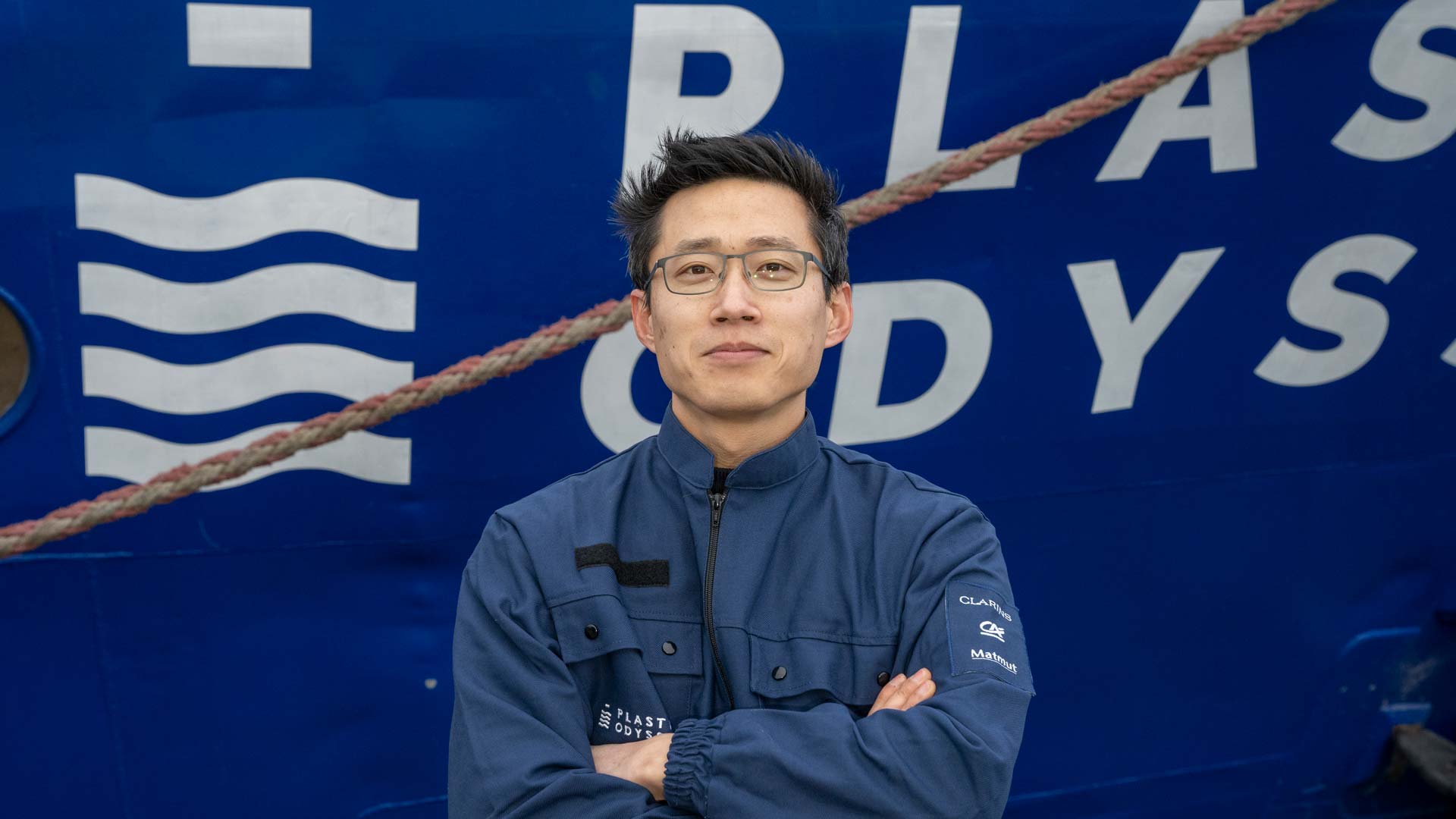 Olivier Charbonnier, captain of MV Plastic Odyssey
Olivier Charbonnier, captain of MV Plastic Odyssey
1 The vessel is “clear of buoys” when it has passed them and is free of any risk they may represent.
Latest News
Dunia Designs: the art of turning recycled plastic profiles into high-end furniture
Dunia Designs is undoubtedly the company that has pushed the exploration of recycled plastic profiles the furthest. Welding, planing, sanding, bending...
Kenya: entrepreneurs committed to tackling plastic pollution
Discover the plastic waste recycling entrepreneurs who participated in the training program aboard the ship in Mombasa, Kenya....
Tanzania: building a local recycling industry
Discover the plastic waste recycling entrepreneurs who participated in the training program aboard the ship in Das es Salaam, Tanzania....

